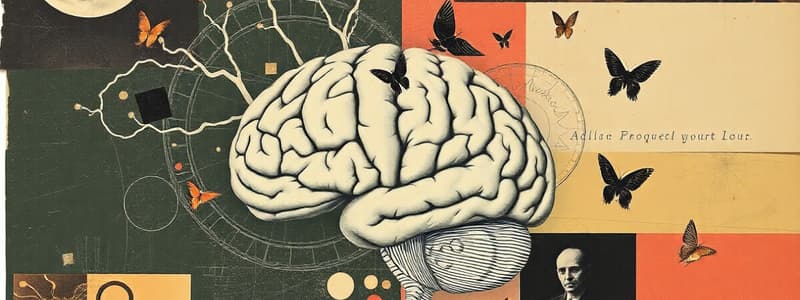Podcast
Questions and Answers
Which of the following is NOT a primary function of the nervous system?
Which of the following is NOT a primary function of the nervous system?
- Receiving sensory input
- Controlling muscles and glands
- Regulating body temperature (correct)
- Integrating information
What is the main way that the nervous system coordinates body functions?
What is the main way that the nervous system coordinates body functions?
- Through metabolic processes only
- Through electrical impulses (action potentials)
- Through hormonal secretions
- Through a combination of electrical impulses and chemical messengers (correct)
Which division of the peripheral nervous system is responsible for involuntary functions?
Which division of the peripheral nervous system is responsible for involuntary functions?
- The voluntary nervous system
- The central nervous system
- The autonomic nervous system (correct)
- The somatic nervous system
Which of the following BEST describes the function of the parasympathetic nervous system?
Which of the following BEST describes the function of the parasympathetic nervous system?
An increased heart rate and rapid breathing would most likely be a result of the activation of which system?
An increased heart rate and rapid breathing would most likely be a result of the activation of which system?
What role does the nervous system play in maintaining homeostasis?
What role does the nervous system play in maintaining homeostasis?
Besides the brain, what helps make up the Central Nervous System (CNS)?
Besides the brain, what helps make up the Central Nervous System (CNS)?
Where does the action potential take place?
Where does the action potential take place?
Flashcards
Sensory input
Sensory input
The nervous system receives information from the environment and inside the body.
Integrating information
Integrating information
The nervous system processes sensory information and decides how to respond.
Controlling muscles and glands
Controlling muscles and glands
The nervous system sends signals that control movements and gland secretions.
Maintaining homeostasis
Maintaining homeostasis
Signup and view all the flashcards
Mental activity
Mental activity
Signup and view all the flashcards
Autonomic nervous system
Autonomic nervous system
Signup and view all the flashcards
Parasympathetic nervous system
Parasympathetic nervous system
Signup and view all the flashcards
Sympathetic nervous system
Sympathetic nervous system
Signup and view all the flashcards
Study Notes
Chemical and Nervous Control in Humans
- Humans experience constant internal and external changes, including blood sugar levels, temperature, and thirst, as well as a sleep-wake cycle.
- Learning objectives for this topic include determining the function of the nervous system, comparing and contrasting nervous system divisions, explaining action potential generation and propagation, and understanding brain structures and functions.
Functions of the Nervous System
- The nervous system receives sensory input, processes this information, controls muscles and glands, and maintains homeostasis and mental activity.
Divisions of the Nervous System
- The central nervous system (CNS) comprises the brain and spinal cord.
- The peripheral nervous system (PNS) consists of nerves and ganglia.
- The nervous system coordinates body functions using both electrical impulses and chemical messengers (neurotransmitters).
Autonomic Nervous System
- The autonomic division of the peripheral nervous system controls involuntary body functions.
- It has two branches: sympathetic and parasympathetic.
Sympathetic Nervous System
- This division is involved in "fight-or-flight" responses.
- It's associated with things like dilating bronchioles, increasing heartbeat, and releasing adrenaline.
Parasympathetic Nervous System
- This branch is associated with the "rest-and-digest" functions.
- It's involved in constricting bronchioles, slowing heartbeat, increasing stomach secretion, and increasing motility of internal organs.
Action Potential
- An action potential is an all-or-none response triggered when a local potential reaches a threshold.
- The process involves depolarization (voltage changes), repolarization, and a brief hyperpolarization phase before returning to resting membrane potential.
- The entire action potential usually takes 1-2 milliseconds to complete.
Brain Regions
- The brain has various regions with specialized functions:
- The frontal lobe controls voluntary motor functions, motivation, aggression, and mood.
- The parietal lobe processes sensory information such as touch, pain, temperature, and balance.
- The occipital lobe is responsible for visual input.
- The temporal lobe is critical for olfactory (smell) and auditory (hearing) senses and memory. Its inferior portion is called the psychic cortex, related to abstract thought.
Studying That Suits You
Use AI to generate personalized quizzes and flashcards to suit your learning preferences.




